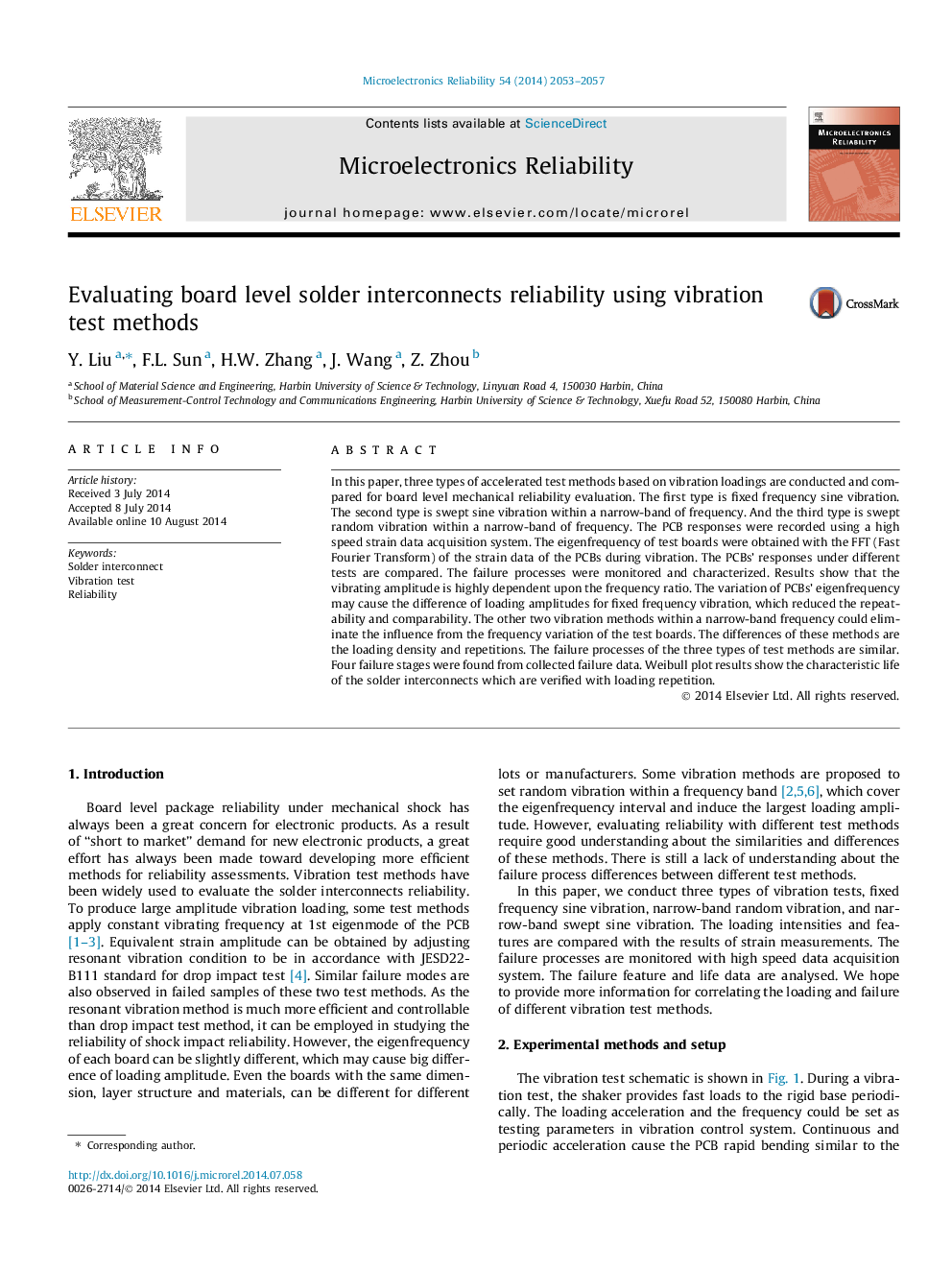| Article ID | Journal | Published Year | Pages | File Type |
|---|---|---|---|---|
| 6946901 | Microelectronics Reliability | 2014 | 5 Pages |
Abstract
In this paper, three types of accelerated test methods based on vibration loadings are conducted and compared for board level mechanical reliability evaluation. The first type is fixed frequency sine vibration. The second type is swept sine vibration within a narrow-band of frequency. And the third type is swept random vibration within a narrow-band of frequency. The PCB responses were recorded using a high speed strain data acquisition system. The eigenfrequency of test boards were obtained with the FFT (Fast Fourier Transform) of the strain data of the PCBs during vibration. The PCBs' responses under different tests are compared. The failure processes were monitored and characterized. Results show that the vibrating amplitude is highly dependent upon the frequency ratio. The variation of PCBs' eigenfrequency may cause the difference of loading amplitudes for fixed frequency vibration, which reduced the repeatability and comparability. The other two vibration methods within a narrow-band frequency could eliminate the influence from the frequency variation of the test boards. The differences of these methods are the loading density and repetitions. The failure processes of the three types of test methods are similar. Four failure stages were found from collected failure data. Weibull plot results show the characteristic life of the solder interconnects which are verified with loading repetition.
Related Topics
Physical Sciences and Engineering
Computer Science
Hardware and Architecture
Authors
Y. Liu, F.L. Sun, H.W. Zhang, J. Wang, Z. Zhou,
